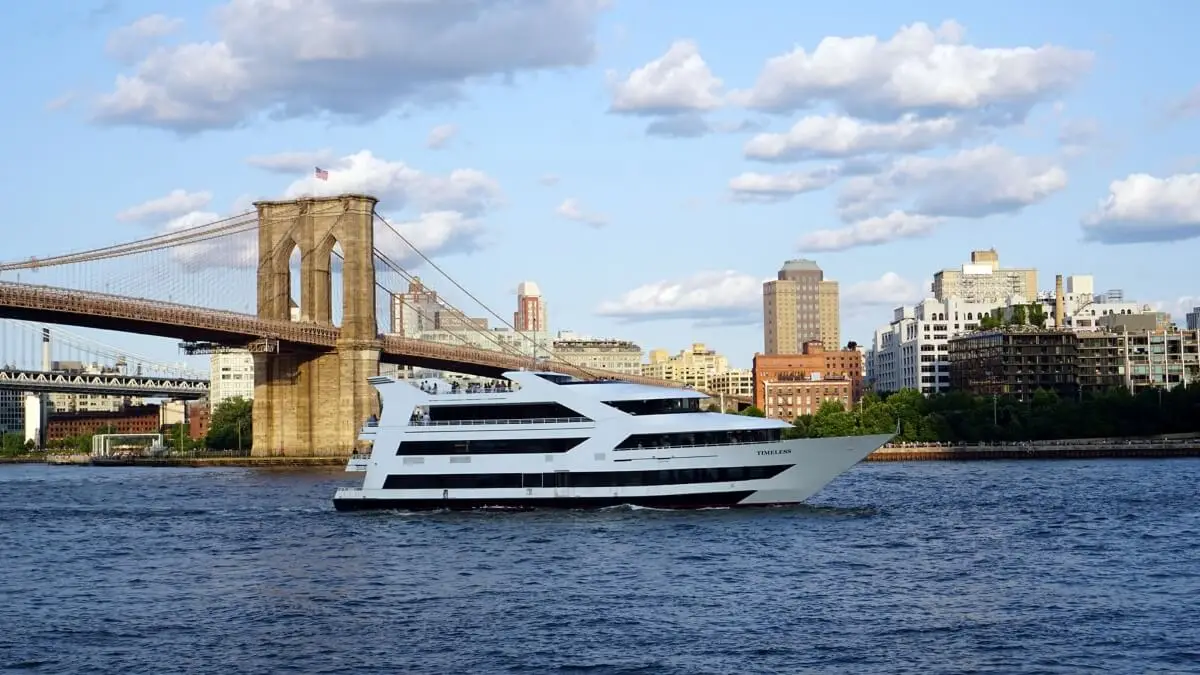The 7th continent is often the final land mass to be added to any traveler’s bucket list. Its remoteness and the cost of getting there definitely make it more difficult to access. Is it worth the time, effort, and money to get there? For many of us, the answer is a resounding “yes!”
If you have ever thought about taking an Antarctica cruise, here are a few tips to help you prepare for this incomparable adventure.
Know What to Expect on an Antarctica Expedition
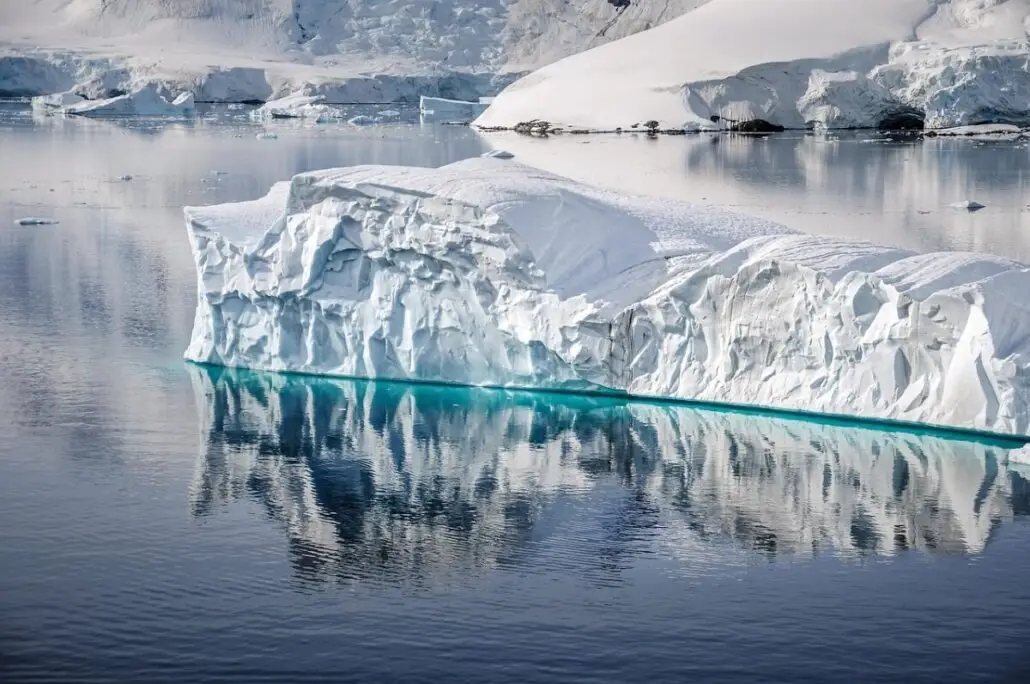
If you have sailed only on mainstream cruise lines, you will find some similarities and many differences. Obviously, the cruise fare will be more expensive because the ships are much smaller, so there are fewer guests paying.
There won’t be any Broadway shows or any other events that require a lot of space. The big events on an Antarctica cruise mostly take place outside of the ship. Wildlife spotting, kayaking, polar plunges, and zodiac exploration are the focus of Antarctica expedition cruising.
Expect to have fewer guests on your expedition ship. Strict regulations to protect Antarctica keep large ships out of the area and limit the number of guests permitted on land at any given time.
None of the expedition ships is the same, but they do have similarities. Most have an older crowd, and they all require safety drills, and they post very vague itineraries. The cruise itinerary is contingent on the weather and the wildlife.
How to Prepare for your Antarctica Expedition Cruise
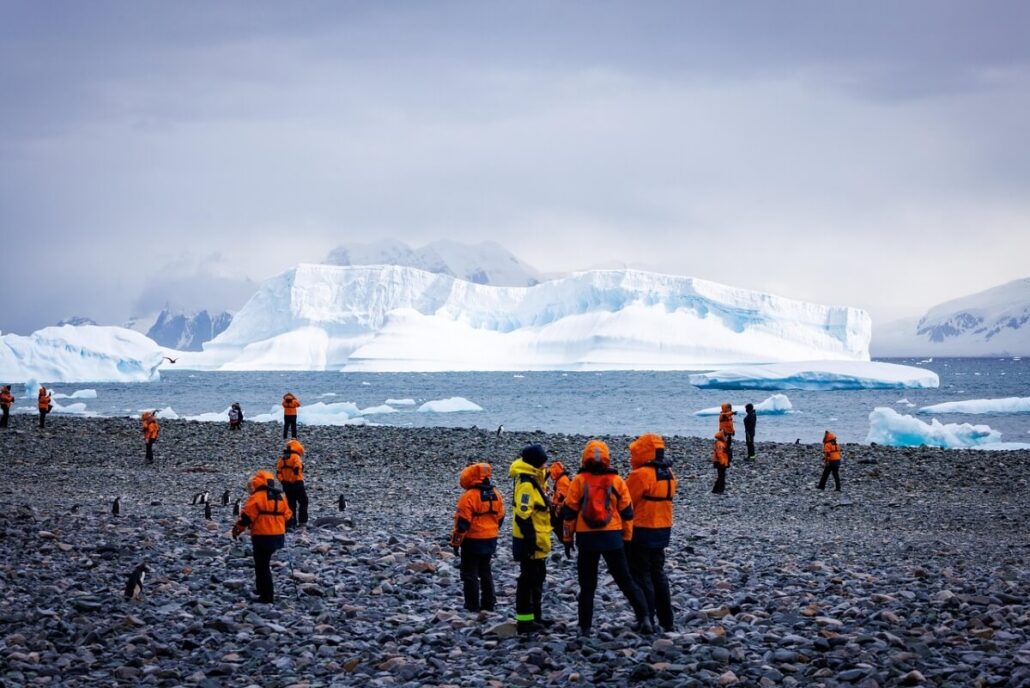
First and foremost, find a travel advisor who is knowledgeable about this type of cruising.
All expedition cruise lines are not the same, just as all mainstream cruise lines aren’t the same. Many require evacuation insurance because the ships have minimal medical facilities.
All will provide a packing list of what you need to bring and what the ship can lend to you. Some cruise lines will rent equipment.
As an example, we have found that muck boots for wet landings can be rented, purchased by the cruiser, or provided by the cruise line.
It’s very important to do more than skim over all details from the cruise line. Before cruising Antarctica, we had to get approval from our healthcare providers.
Food
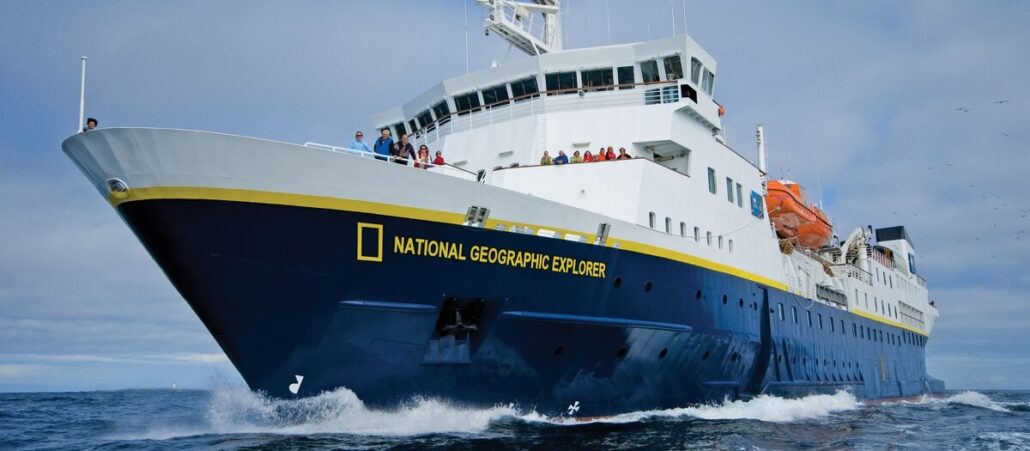
On an Antarctica expedition cruise, there is often just one chef aboard. Your dining experience will depend on him or her. With Lindblad Expeditions, the chef plans his own menus.
He or she may design a menu and is not required to use a menu developed by the corporate offices.
On our Antarctica cruise in 2024, we sailed on the NatGeo Explorer.
Our dining experience throughout the entire cruise impressed us. In addition to three hearty meals per day, we also had snacks available throughout the day, so nobody would ever go hungry.
There were a few options for meals. We could do a regular lunch or an abbreviated service with smaller portions. Both of the dining rooms were enclosed by window walls so that we didn’t miss anything during our meals.
It’s All About Learning
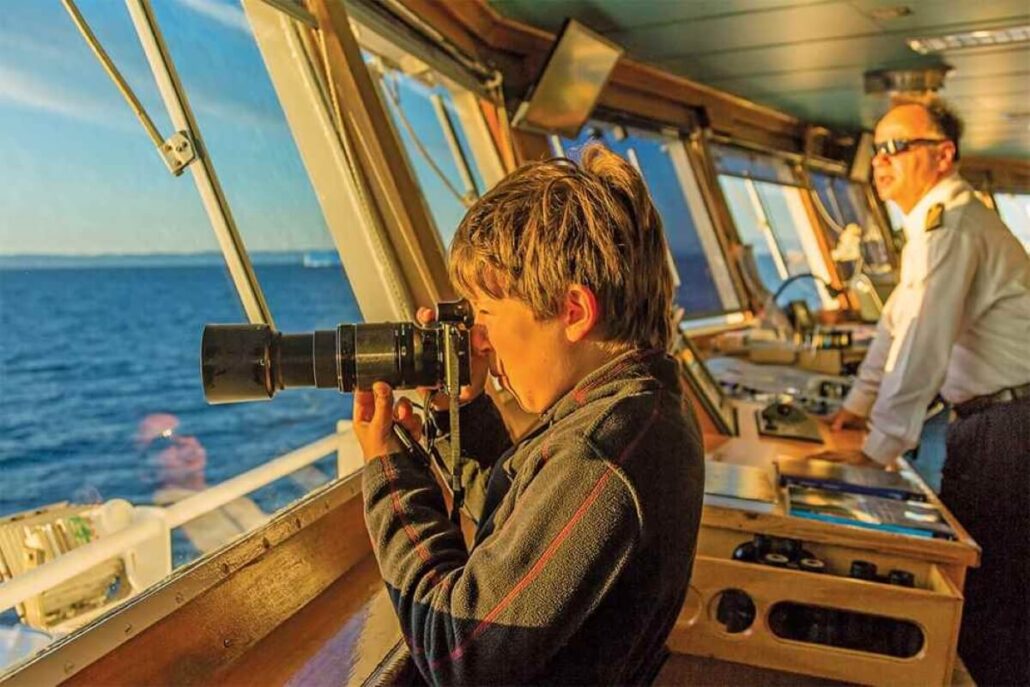
Lindblad maintains a close partnership with the National Geographic Society.
We had multiple daily learning sessions. Photographers, historians, biologists, and other experts explained what was going on around us.
On shore, the staff led hikes and zodiac tours, always providing information about the geology, the flora, the fauna, and the history of exploration in Antarctica. We even had a glacier expert on board.
National Geographic Explorer had a nice library with books focusing on anything pertaining to Antarctica. One great benefit on this ship is the Camera Locker, where guests can try Olympus cameras.
The photographers on board assist with instructions on the usage and also give workshops to help guests improve their shooting skills.
Antarctica Cruise 2024
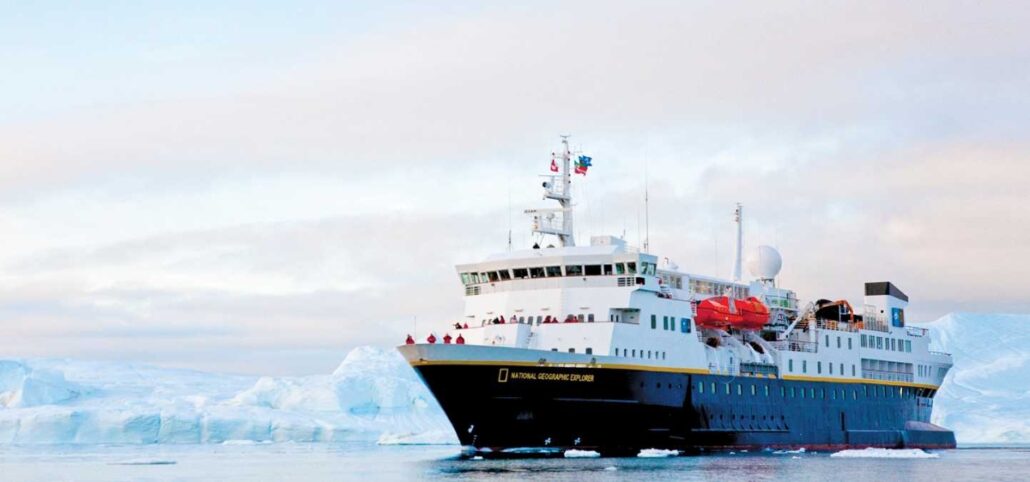
The excitement of getting to Buenos Aires from where we would fly on a charter flight the next day and board the National Geographic Explorer, superseded the stress of dealing with lost luggage that would not make it to Buenos Aires before we departed for Antarctica.
| Just The Facts | |
|---|---|
| Gross Tonnage: | 6,471 GRT |
| Entered Service: | 1982 |
| Year Refurbished: | 2023 |
| Stateroom: | 81 |
| Passenger Count: | 148 |
| Crew: | 70 |
Some consider National Geographic Explorer the quintessential exploration ship for doing an Antarctica expedition. We totally agreed. We appreciated the multiple public areas where we could find solace and gaze at the scenery.
Because there are limits on the number of people on shore, we were grouped into several smaller contingents of people. The order rotated daily so that the same group didn’t always leave the ship at the first call for shore excursions, which on National Geographic Explorer are included in the fare.
Lindblad takes into consideration the fitness level of the guests, so there are tough hikes and easier hikes along with something in between. We often signed up for the excursions in advance just so the expedition team had a general idea of how many zodiacs would be required to get people to shore.
Those who were in the last group could listen to a lecture about the intrepid explorers who visited Antarctica. Or they could engage in other activities.

We found our fellow guests to be a good mix of ages. Often, these more remote, longer, and more expensive cruises attract an older crowd, but on this cruise, it was so refreshing to see so many younger people and first-time cruisers.
If I could do only one cruise in my life, an Antarctica expedition cruise would be it. (Well, a world cruise that included Antarctica would be it!)
Anybody sailing on an Antarctica cruise already has something in common with the other passengers. Not only did our expedition leaders help us, but passengers willingly assisted fellow passengers in times of need. The crew did a great job of getting us in and out of the zodiac boats. Most impressive was the system for getting us into and out of kayaks.
We had only one day appropriate for kayaking. Sitting in the kayak and feeling very small in the vastness of Antarctica came to an end too quickly. It ranks as one of the many high points of the trip for me.
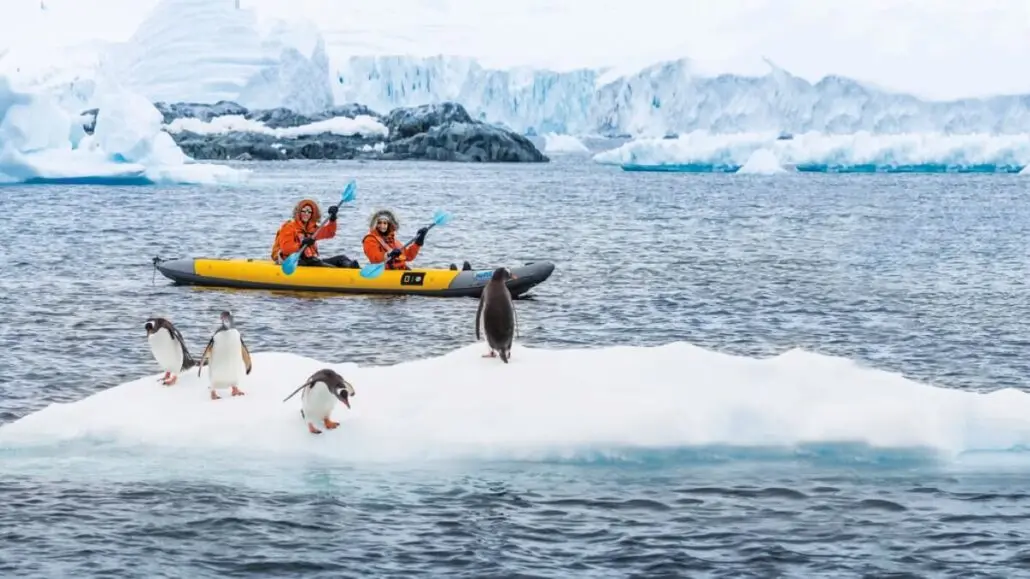
As mentioned previously, everything is subject to the weather. And how could I forget to mention the Drake Passage crossing, which is either the Drake Shake or the Drake Lake? From Ushuaia, we had a lake, but weren’t so lucky on our return.
The lake provided a faster-than-usual crossing that allowed us to have an extra landing. With mostly good weather, we had a total of eleven landings, which is more than many people get.
As safety always comes first, our captain constantly monitors conditions and consults with the cruise expedition leader to determine the best points to land. We outran heavy winds one day and took refuge in a protected harbor.
The bridge is often open to guests. We made our way to the bridge and used the binoculars up there to watch for birds, whales, orcas, seals, and penguins. The captain explained the charts and graciously answered any questions we asked. We also joined the naturalists and other experts on the bridge in search of wildlife.
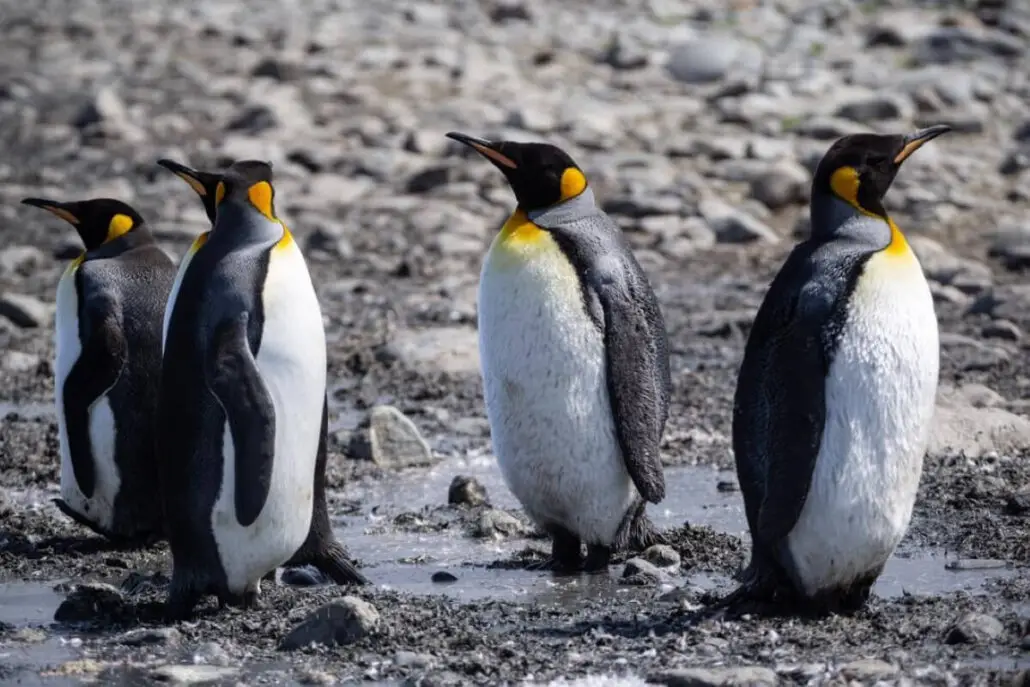
We had a daily recap of events and a slide show of the day. My favorite was watching what the divers saw. Yes, there are divers on the ships, and their slideshows are fascinating.
We always knew the plan for the next day and the tentative itinerary, always subject to change. Every day was a new adventure. No guest was required to do any of the activities.
When we went to shore, we wore our muck boots. Returning to the ship, we thoroughly cleaned our boots so that our next time out, they would be free of contaminants.
Lindblad Expeditions takes great care in leaving the environment in a condition that future guests will have an enjoyable experience. All the components of my Antarctica cruise with Lindblad Expeditions came together to create the perfect Antarctica experience.
Your Antarctica expedition cruise adventure awaits you!



